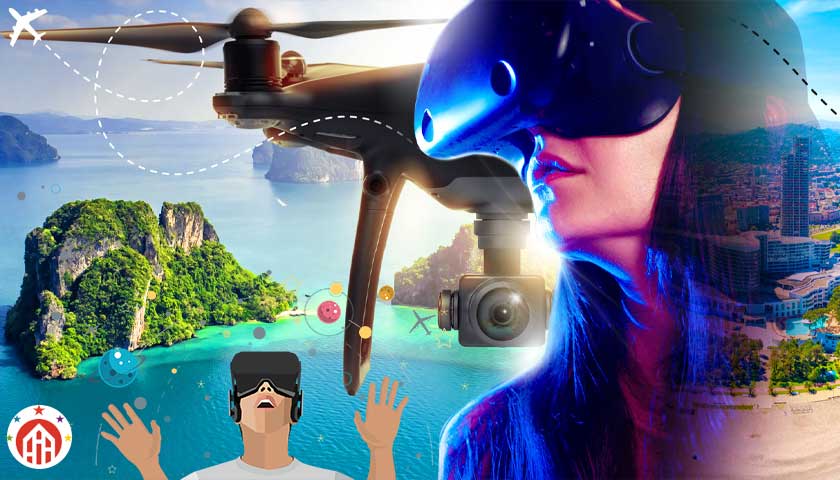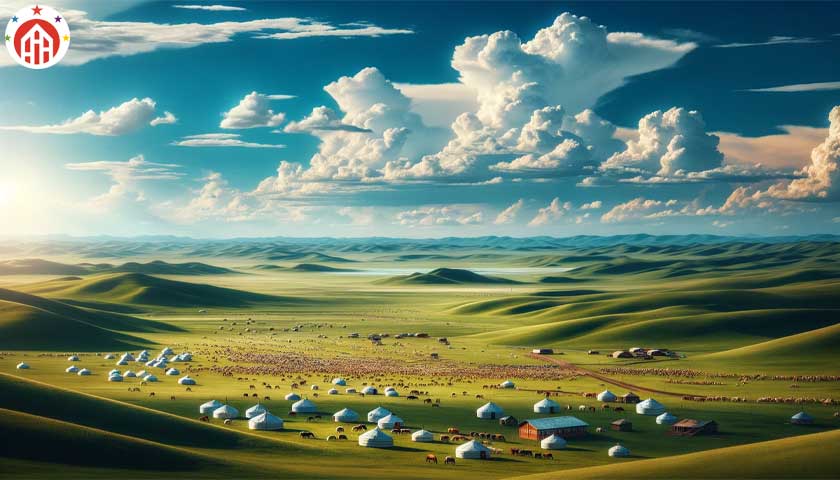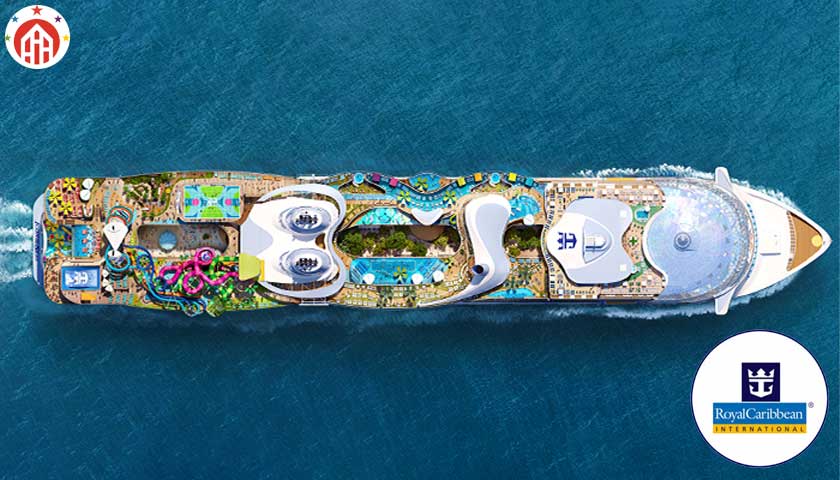Future of Virtual Reality in Tourism
Travel is a sector that I’m particularly passionate about, and one that’s suffered immensely in the wake of the COVID-19 crisis. As the industry looks to the future, one of its biggest concerns will be how to improve the whole travel experience and reduce some of the “pain points” that come with travel. I believe VR and AR could help with this.
If the current trajectory of technological advancement is any indication, the hottest destination of the next decade won’t be transoceanic, it’ll be hard-coded.
With globe-trotting a distant memory as we continue to fight a pandemic that’s forced us to stay indoors, increasing numbers of pent-up people are swapping their sunglasses for virtual reality headsets and holidaying together in the ‘metaverse.’
Allowing VR to permanently shake off its image of being a gimmick in the tourism sector, Covid-19 has brought with it a growing demand for escapism and consequently a ‘watershed moment’ for the capabilities of reality altering technology (according to analysts). Many believe that it’ll transform VR’s reputation as a marketing gimmick into a permanent fixture of tourism.
1. Virtual travel
VR allows us to explore new places without physically traveling there, leading some to speculate whether virtual travel could ever replace the real thing. Personally, I don’t think it will. Virtual travel could never compete with the sights, sounds, smells and sensations of being in an exciting new place. But there’s certainly value in being able to explore parts of the world virtually – not least because we can check out destinations before we decide whether to travel there in real life.
Virtual travel can also help visitors experience destinations that are remote, difficult to get to, or need to be preserved without humans trampling around all over the place. The Patagonia VR experience on Oculus Rift is one example of a particularly rich virtual travel experience. Exploring the mountain landmark of Monte Fitzroy, and specifically Laguna Sucia, the remote glacial lake that lies at the foot of the mountain, this VR experience gives users access to a stunning glacial lake that’s hard to reach in real life.
2. Virtual hotel tours
Thanks to virtual tours, holidaymakers can check out hotels in more detail before they book – kind of like a “try before you buy” (or “fly” as the case may be). Several upscale resorts are now embracing virtual tours as a way to show off their stunning locations and world-class amenities, including a number of resorts in The Maldives. Importantly, many of these tours can be experienced using just a smartphone, tablet, or computer, meaning you don’t need a headset to explore your next holiday destination.
3. Test drive excursions and attractions
As well as checking out different hotels, VR can also help travelers test drive different trips and excursions on offer in their chosen destinations. In other words, you can try out various experiences to decide how you really want to spend your time and money when you arrive on vacation. Virtual excursions can therefore help holidaymakers get more out of their precious vacation time.
But VR trips may also help to encourage bookings in the first place – meaning, a customer may be more inclined to book a vacation once they’ve got a better idea of the fantastic excursions on offer in a resort. British travel agent Thomas Cook experimented with immersive VR experiences that allowed customers to try out different excursions, including a helicopter tour of Manhattan. The company reported a 190 percent uplift in bookings for New York vacations after customers tried the five-minute New York VR experience in store. That has to make travel companies, keen to increase bookings after the pandemic, sit up and take notice.
4. Immersive navigation
So, you’ve virtually visited your chosen destination in advance, taken a VR tour of your hotel, and even tried out a few virtual excursions. Now you’ve arrived at your destination and are ready to hit up your first landmark. If only you could find it…
This is where AR can help – specifically, AR-infused navigation. As the go-to navigational app for most of us, it’s no surprise that Google Maps now incorporates an AR feature for those who are navigating on foot. (At the time of writing, it’s not available for users who are driving.) Called Live View and announced in 2019, the AR route-finding feature is available on all ARCore and ARKit-enabled mobile devices, and in any locations where Google already has Street View. The idea is simple: using the Google Maps app and said AR-enabled device, big arrows, and easy-to-follow directions are overlayed onscreen onto the street view, to guide users on which direction to walk and where to turn.
The idea may be simple, but it’s small advances like this that help to make international travel a heck of a lot easier. So, if you ever end up lost in a busy foreign city, or if you simply struggle to make sense of 2D maps, AR-enhanced route-finding is for you.
In one example, Atlantis, the Palm in Dubai – situated on The Palm Jumeirah, the famous manmade palm-shaped archipelago – has created a stunning 360 panoramic VR video. The video provides a whistle-stop tour of the hotel’s key features, taking in the impressive lobby, the Royal Bridge (the biggest suite in the hotel), one of the underwater suites (yes, underwater), the famous Nobu restaurant, the aquarium, pool, and waterpark, and finishing with a nighttime stroll around the gardens.
Augmented reality
Augmented reality (AR) is an interactive experience of a real-world environment where the objects that reside in the real world are enhanced by computer-generated perceptual information, sometimes across multiple sensory modalities, including visual, auditory, haptic, somatosensory and olfactory. AR can be defined as a system that incorporates three basic features: a combination of real and virtual worlds, real-time interaction, and accurate 3D registration of virtual and real objects. The overlaid sensory information can be constructive (i.e. additive to the natural environment), or destructive (i.e. masking of the natural environment). This experience is seamlessly interwoven with the physical world such that it is perceived as an immersive aspect of the real environment. In this way, augmented reality alters one’s ongoing perception of a real-world environment, whereas virtual reality completely replaces the user’s real-world environment with a simulated one. Augmented reality is related to two largely synonymous terms: mixed reality and computer-mediated reality.
Augmented Reality is an amazing technology which holds immense potential. It’s being used in various domains including automobile, gaming, navigation and much more. Augmented Reality in Tourism is the next big thing after AI. Advanced application of virtual reality in tourism will not only make travelling more fun but also boost revenue on this niche.
The future of augmented reality in tourism is vast and vivid. It will bring many advantages to both tourists and tourism boards. Before going to the actual place, people can take a short tour of that place so that they can decide where to go. Augmented reality tourist experience is the new schemes launched by numerous companies to promote different destination places.
Augmented Reality for Travel Agency
A company named Metaverse Studio is created on the go Augmented platform for everyone. Their concept is based on a QR code-based system, where the user needs to scan the code, and the virtual experience will be launched instantly whenever the user wants. This concept is built using GPS coordinates of that place at the real time for seamless experience. The number of an augmented reality service provider in tourism is increasing rapidly.
AR has Brought Multiple Revenue Models in Tourism
Along with the virtual tours and navigation systems, advertising agencies are also trying their luck in this field. AR for tourism industry has opened various earning streams like AR based Ads on airports. People can experience advertisements in the augmented reality way just by scanning code by their smartphones.
Many companies are using virtual billboards for attracting customers. You will find many billboards installations at malls, train stations, and airports. Many companies are now creating their ads based on this concept, and as per research conducted by a marketing firm revealed that these ads have better conversion rates as compared to traditional multi-channel ads.
Providing More Information in Real Time
Augmented reality travel and tourism sector are benefited because of various factors like a comprehensive experience of the destination place, cost-effective solutions, and real-time information available to tourists. With the help of this platform, a user can check travelling experience, climate, main highlighted places to visit in just a single click.
People can virtually choose which restaurant or bar to go just by checking it on their phones. Take virtual tours of various restaurant and then decide where to go and never regret because of the fake reviews. Directly book your table after having a quick tour and never wait in a queue for your number.
Hotels are using this technology on their booking applications so that the customer can have a virtual tour of the room and book it with satisfaction. This concept has upscaled the tourism industries by providing more facilities to travel freaks directly on their phones.
When We Stayed Home | Oculus Quest
What does metaverse mean?
The Metaverse is a term used to describe a virtual space within digital environments such as online games, social media, and virtual reality. It is a combination of the prefix “meta”, meaning beyond, and stem “universe”. Coined by Neal Stephenson, the metaverse is, in fact, the stuff of science-fiction.
Why is metaverse important?
While many virtual worlds exist online, users currently can’t move between them while retaining their identities and assets. The eventual metaverse could solve this problem, turning disparate online worlds into a single, seamless entity. It has even been dubbed the next evolution of the internet.
How does the metaverse work?
Metaverse, a term first coined in science fiction, is a combination of the prefix “meta”, meaning beyond, and “universe”. It refers to shared virtual worlds where land, buildings, avatars and even names can be bought and sold, often using cryptocurrency.
Will VR replace travel?
Virtual reality cannot yet replace traditional tourism, but it still offers intriguing opportunities. Technology is becoming more complex and many people may consciously start using it instead of traveling to improve the environment.
7 Virtual Reality Stocks to Buy for the Big Metaverse Move
With that in mind, here are 7 virtual reality stocks to buy for the big metaverse move:
? Facebook (NASDAQ:FB)
? Sony (NYSE:SONY)
? Microsoft (NASDAQ:MSFT)
? Alphabet (NASDAQ:GOOG,GOOGL)
? Nvidia (NASDAQ:NVDA)
? Unity Software (NYSE:U)
? NexTech AR Solutions (OTCMTKS:NEXCF)
Virtual reality (VR) is a simulated experience that can be similar to or completely different from the real world. Applications of virtual reality include entertainment (e.g. video games), education (e.g. medical or military training) and business (e.g. virtual meetings). Other distinct types of VR-style technology include augmented reality and mixed reality, sometimes referred to as extended reality or XR.





The world’s most visited museum has put its entire collection of more than 480,000 artworks for free online viewing. This means that you can see the Mona Lisa up-close from the comfort of your home. Among the sculptures are the Winged Victory of Samothrace, a 2nd century BC marble sculpture of Greek goddess Nike, and Venus de Milo, a sculpture by Alexandros of Antioch. There are paintings, jewellery, textiles, furniture and numerous other historical objects for you to see.